Queensland Place Histories - Burleigh Heads, Gold Coast
By JOL Admin | 6 March 2012
The area now known as Burleigh Heads was first described by Robert Dixon, during a survey of the coastal areas between the Clarence and Brisbane Rivers. The name chosen by Dixon for the prominent headland was Burley Head, with the alternate spelling coming into more common usage over time. Underestimating its future popularity, these early surveyors labelled the locality and other coastal lands as "useless dune country" and the idea of open sea bathing was not to become widely accepted until after 1900. One of the first activities said to have been undertaken by European settlers on the beach at Burleigh was horse racing, with the wide firm sand an obvious advantage.
For thousands of years before European settlement and still today, this area belongs to the Kombumerri Aboriginal people, with evidence of their existence in the Gold Coast dating back over 20,000 years. This group call the headland Jellurgal, important in their cultural beliefs as it was told that the great spirit named jaberer had created it. A Bora Ring existed at the Burleigh near where the Gold Coast highway now runs, A culturally important landmark where adolescents were initiated into manhood. The Kumbumerri people would use the headland as a lookout in search of important marine food sources such as fish, turtles and dugong. Also at the top of this mountain was a women's burial ground. The Kombumerri language is the Mibiny, a member of the Yugambeh language group, the dialect being Ngarahngwal, coming from the word 'Neerang,' meaning Shovel-nosed Ray and also lending its use to the area we now call Nerang. 'Kaiala' is a word in this language, a greeting that means 'good wishes.' Learn more about the traditional lands of the Kombumerri people at the Kombumerri Together Project, and our interactive Indigenous languages map of Queensland.
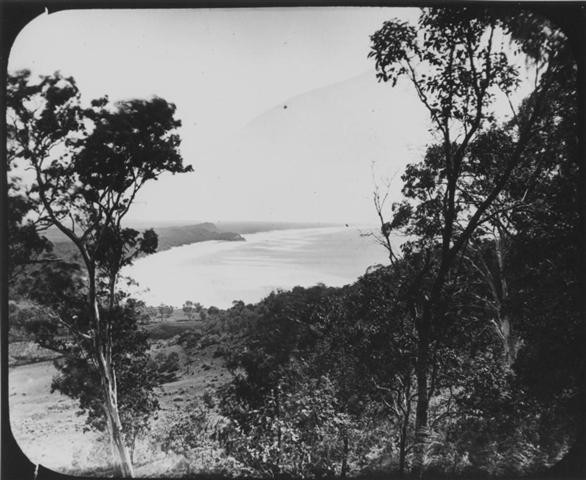
View of the coast at Burleigh Heads, looking through trees down from the hill as surf rolls in. Burleigh Heads, ca. 1892. State Library of Queensland. Negative number 145411. John oxley Library, State Library of Queensland
European settlement at Burleigh developed from humble beginnings as a coaching stop during the journey south from Southport and a hotel to cater to travellers had opened at Burleigh by 1882. This journey could be considered to be the area's first "tourist route" and was developed by Murwillumbah hotelier, Otto Vetter, particularly from around 1888 when he commenced a twice weekly coach service between Southport and Tweed Heads.
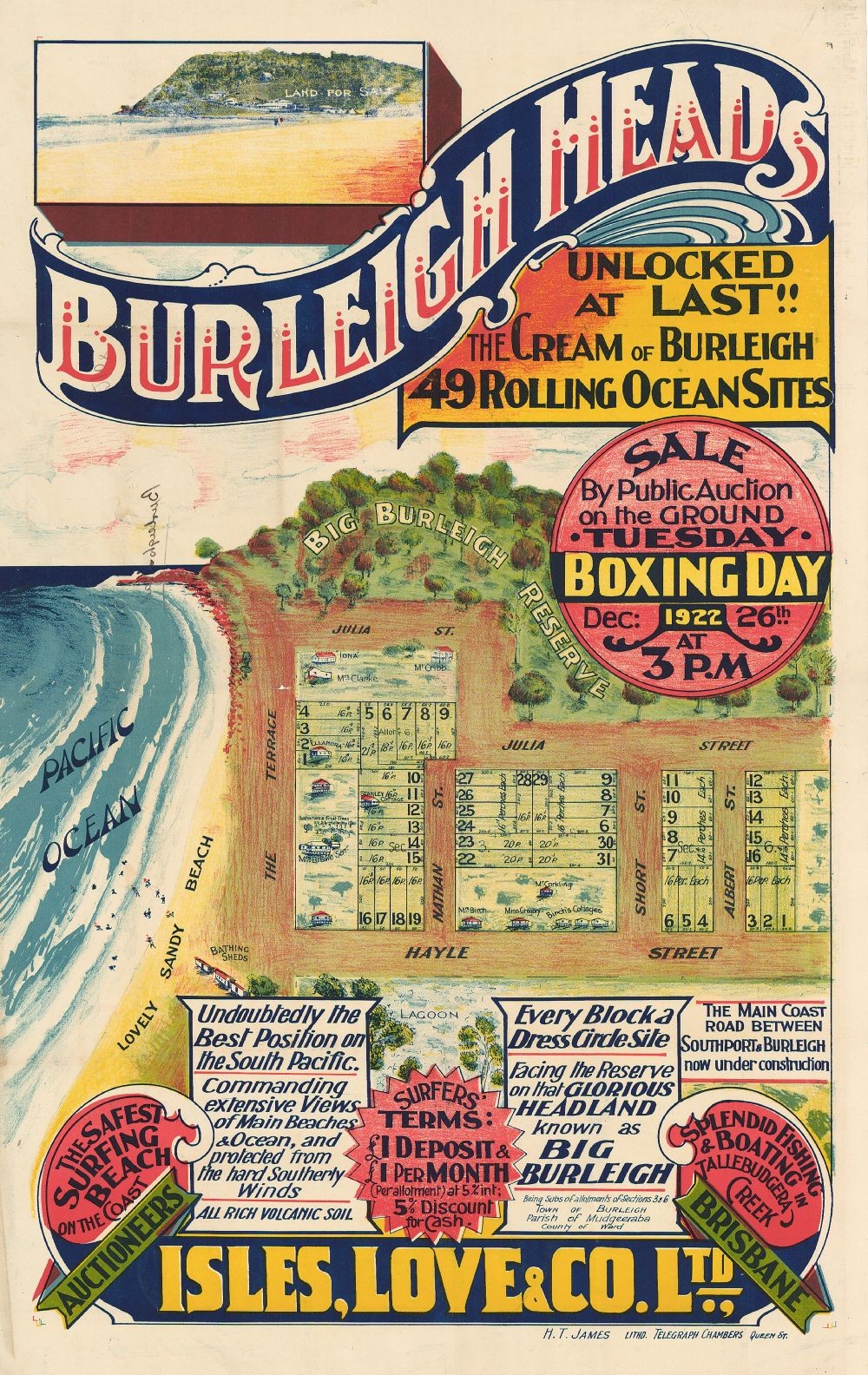
Burleigh Heads / Isles, Love & Co. Ltd., Auctioneers, John Oxley Library, State Library of Queensland
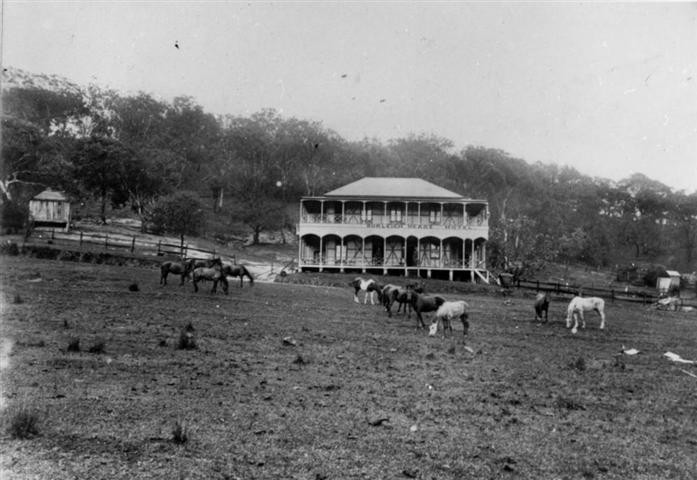
Horses grazing in the paddock in front of the Burleigh Hotel, Burleigh Heads, 1900. State Library of Queensland. Negative number 147441
Burleigh's growth was hampered to some extent, when the railway line bypassed it, going through West Burleigh, some three kilometres away, and separating the town from the main flow of travellers. However, the area was still an attractive destination to both travellers and residents alike and development soon picked up. The first two large housing estates in the area were developed in 1915. Also reflective of the growth and importance of the area was the opening of a school in 1917 and the Surf Life Saving Club in 1923.
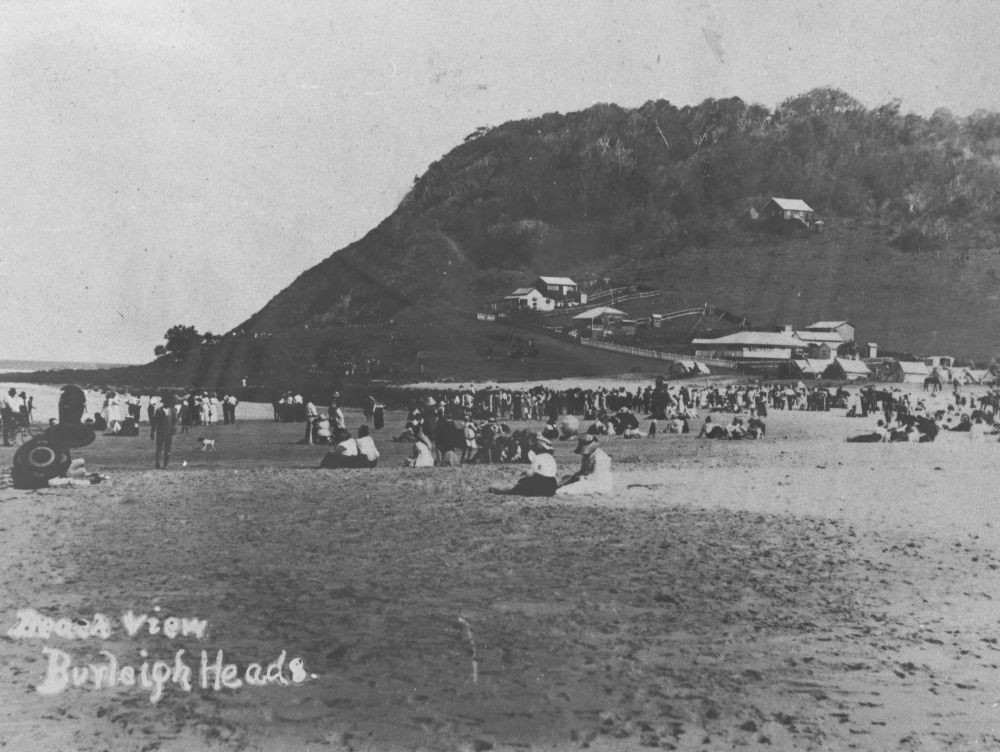
Burleigh Heads, Queensland, ca. 1920, John Oxley Library, State library of Queensland
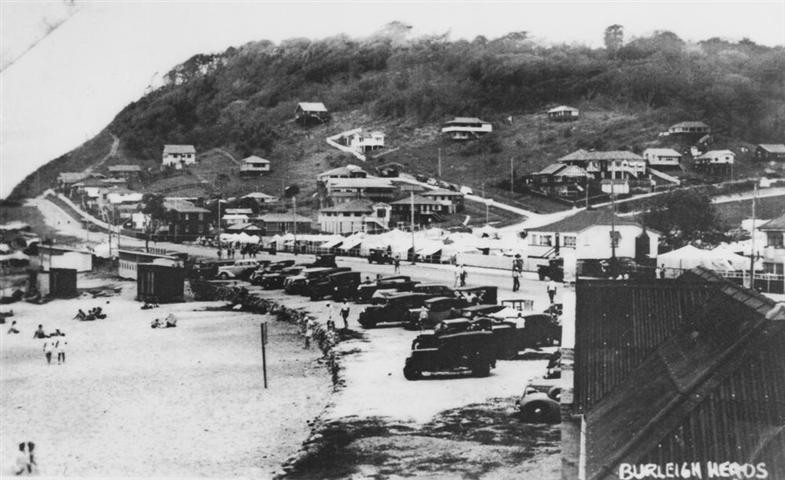
Burleigh Heads, Queensland, 1922. State Library of Queensland. Negative number 83534
In 1927, a road bridge was constructed over Tallebudgera Creek, improving access by replacing the earlier vehicular ferry. The natural beauty of the Burleigh Headland was also protected when an area encompassing the headland itself and some of the surrounding land was gazetted as a national park, comprising some 27 hectares. This park is the only major coastal reserve between Main Beach and the New South Wales border. Other changes and developments over the years have included David Fleay's Wildlife Sanctuary (1952), Penney's Variety Store (1955), a drive-in theatre (1957) and the first motel (1958).
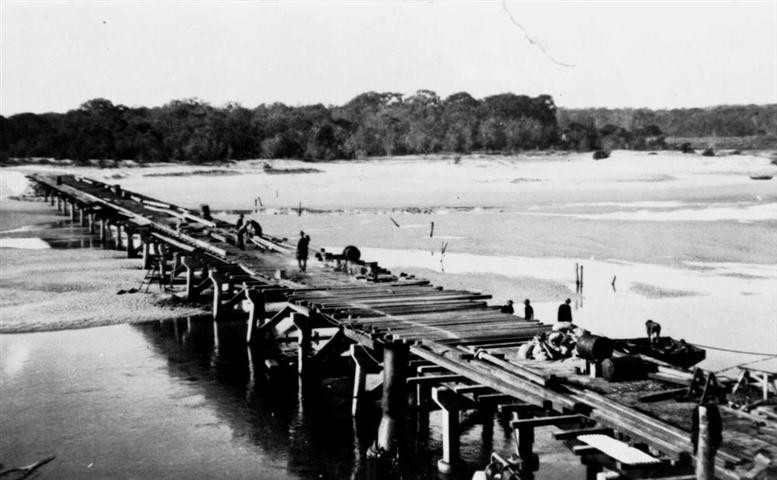
Tallebudgera Creek Bridge, Burleigh Heads, 1926. State Library of Queensland. Negative number 62665
The suburb was originally much larger than the area we now know as Burleigh Heads, previously taking in Miami and Palm Beach. The area has always been popular with holiday makers, with a prominent camping area near the beachfront.
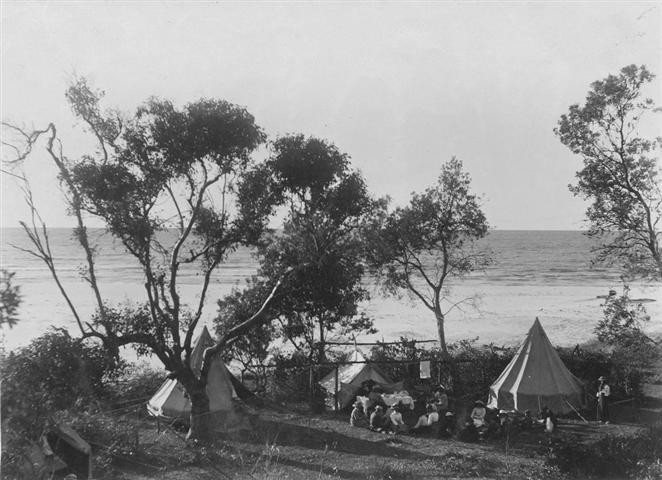
Camping at Burleigh Heads, Queensland, ca. 1911. State Library of Queensland. Negative number 18771
You can find further resources on Burleigh Heads via our One Search catalogue.
Brian Randall - Queensland Places Coordinator, State Library of Queensland
Comments
Your email address will not be published.
We welcome relevant, respectful comments.